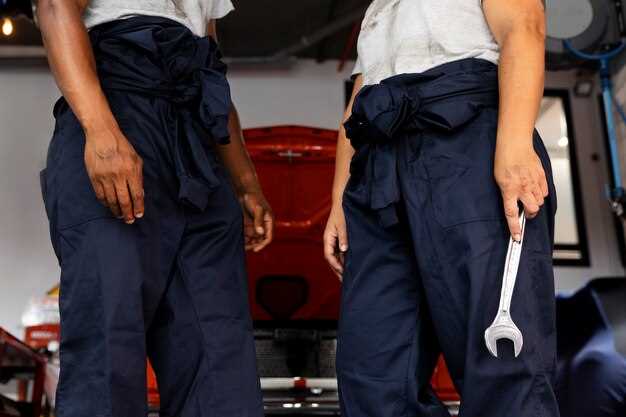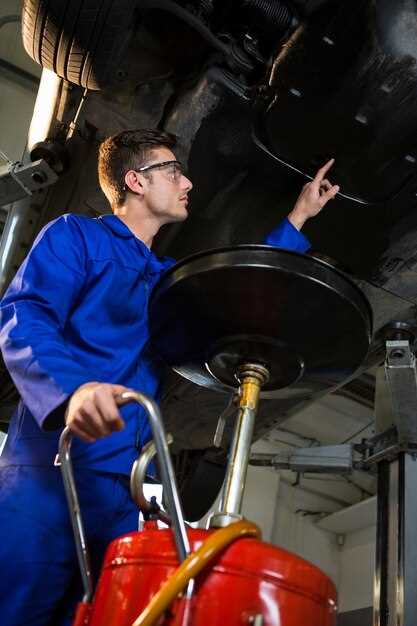
Vehicles rely heavily on a complex system of belts and hoses that ensure various components operate efficiently. These components play critical roles, from delivering coolant to the engine to facilitating the power transfer from the crankshaft to essential accessories. Over time, wear and tear can lead to deterioration, resulting in potential breakdowns or costly repairs.
Regular inspection of belts and hoses is vital for maintaining vehicle performance and reliability. Issues such as fraying, cracking, or swelling may not be immediately visible but can indicate underlying problems that could escalate if left unaddressed. Proactive checks can save vehicle owners from unexpected failures and enhance overall safety on the road.
In this article, we will explore the key aspects of inspecting belts and hoses, identifying common signs of wear, and understanding the importance of preventive maintenance. By becoming familiar with these components and their upkeep, vehicle owners can take informed steps to ensure their cars remain in optimal condition.
Identifying Signs of Wear in Engine Belts

Engine belts are critical components of your vehicle, responsible for driving various accessories and systems such as the alternator, power steering pump, and water pump. Regular inspection of these belts is essential to prevent unexpected failures. Here are some key signs of wear to look for:
One of the most visible indicators of a worn engine belt is cracking. As belts age, they may develop small fissures along their surface. These cracks can grow larger over time, leading to belt failure. A cracked belt has reduced tensile strength and may not perform optimally, which could result in the accessories not operating correctly.
Another sign to monitor is fraying or peeling edges. If you notice that the edges of the belt appear worn or damaged, this could indicate that the belt is beginning to fail. Enlarging frayed sections can ultimately lead to the belt snapping, causing severe engine damage.
Glazing is also a common issue with engine belts. This occurs when the belt surface becomes shiny and smooth. Glazing typically results from overheating or excessive tension. A glazed belt loses its grip on the pulleys, which can lead to slippage and eventual failure. It’s vital to replace a glazed belt promptly to ensure proper functionality.
In some cases, you may hear a squeaking or squealing noise when the engine is running. This sound can be indicative of a worn or loose belt that is not making proper contact with the pulleys. If you experience such noises, it’s advisable to inspect the belt for signs of wear and tension adjustment.
Finally, pay attention to any visible wear patterns on the belt. A belt that shows uneven wear may indicate misalignment of the pulleys or improper tension. Addressing these issues early can prevent further damage to the belt and related systems.
In conclusion, regular inspection for signs of wear–such as cracks, fraying, glazing, unusual noises, and uneven wear patterns–is crucial to maintaining the integrity of engine belts. By identifying these issues early, vehicle owners can take proactive measures to replace worn belts, thereby avoiding costly repairs and ensuring reliable vehicle performance.
Understanding the Importance of Hose Integrity Checks

Hoses are critical components in a vehicle’s operation, facilitating the transfer of fluids such as coolant, oil, and fuel. Ensuring their integrity is essential for maintaining vehicle performance and safety. Over time, hoses can degrade due to factors like heat, pressure, and exposure to chemicals, leading to potential leaks or bursts that can cause engine overheating, decreased performance, or even hazardous situations on the road.
Regular hose integrity checks allow vehicle owners and technicians to identify signs of wear and damage before they escalate into serious failures. During these inspections, look for cracks, bulges, soft spots, or signs of leaking fluid. Properly functioning hoses should maintain their shape and flexible structure, enabling efficient fluid movement throughout the system.
Failing to conduct these checks can lead to costly repairs and increased risks while driving. A compromised hose can rupture suddenly, resulting in a loss of power steering or brakes, which could cause accidents. Therefore, prioritizing hose integrity checks as part of routine vehicle maintenance can enhance safety, prolong the life of the vehicle, and ensure smooth operation under various driving conditions.
Moreover, the replacement of old or damaged hoses is a relatively inexpensive service compared to the potential costs incurred from engine damage or accidents caused by neglect. Invest time in regular inspections to safeguard your vehicle’s reliability and performance.
Best Practices for Routine Inspections and Maintenance
Regular inspections and maintenance of belts and hoses are essential to ensure vehicle reliability and performance. Following these best practices can help vehicle owners prevent failures and extend the lifespan of these components.
- Schedule Regular Inspections:
Establish a routine schedule for inspecting belts and hoses. Check them every six months or before long trips to identify any signs of wear.
- Visual Inspections:
Conduct thorough visual inspections to look for cracks, fraying, or signs of corrosion. Pay attention to the condition of the outer surface as well as the ends where they connect.
- Feel for Signs of Wear:
Run your fingers along the surfaces of the belts and hoses. Look for any soft spots or areas that feel unusually smooth, which may indicate wear or damage.
- Check Tension:
Ensure that belts are properly tensioned. A belt that is too loose can slip, and one that is too tight can cause excessive wear on bearings.
- Monitor Fluid Leaks:
Keep an eye out for fluid leaks that may degrade hoses over time. Address any leaks promptly to prevent premature hose failure.
- Replace Old Belts and Hoses:
Follow manufacturer recommendations for replacement intervals. If a belt or hose is nearing the end of its service life, replace it proactively to avoid breakdowns.
- Use Quality Parts:
When replacing belts and hoses, choose high-quality components that meet or exceed OEM standards to ensure optimal performance.
- Keep Engine Clean:
Regularly clean the engine compartment to remove debris and contaminants that can harm belts and hoses. A clean environment reduces the risk of degradation.
- Consult a Professional:
If unsure about performing inspections or if any issues are detected, consult a qualified mechanic for an expert assessment and service.
By following these best practices, vehicle owners can proactively manage the condition of belts and hoses, reducing the likelihood of unexpected failures and ensuring reliable vehicle operation.




